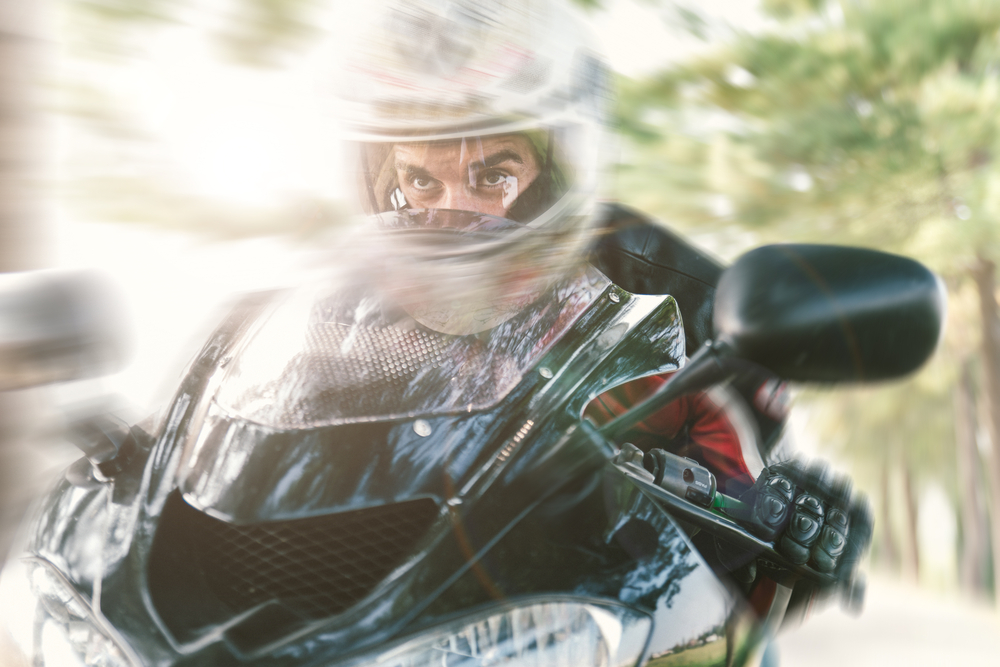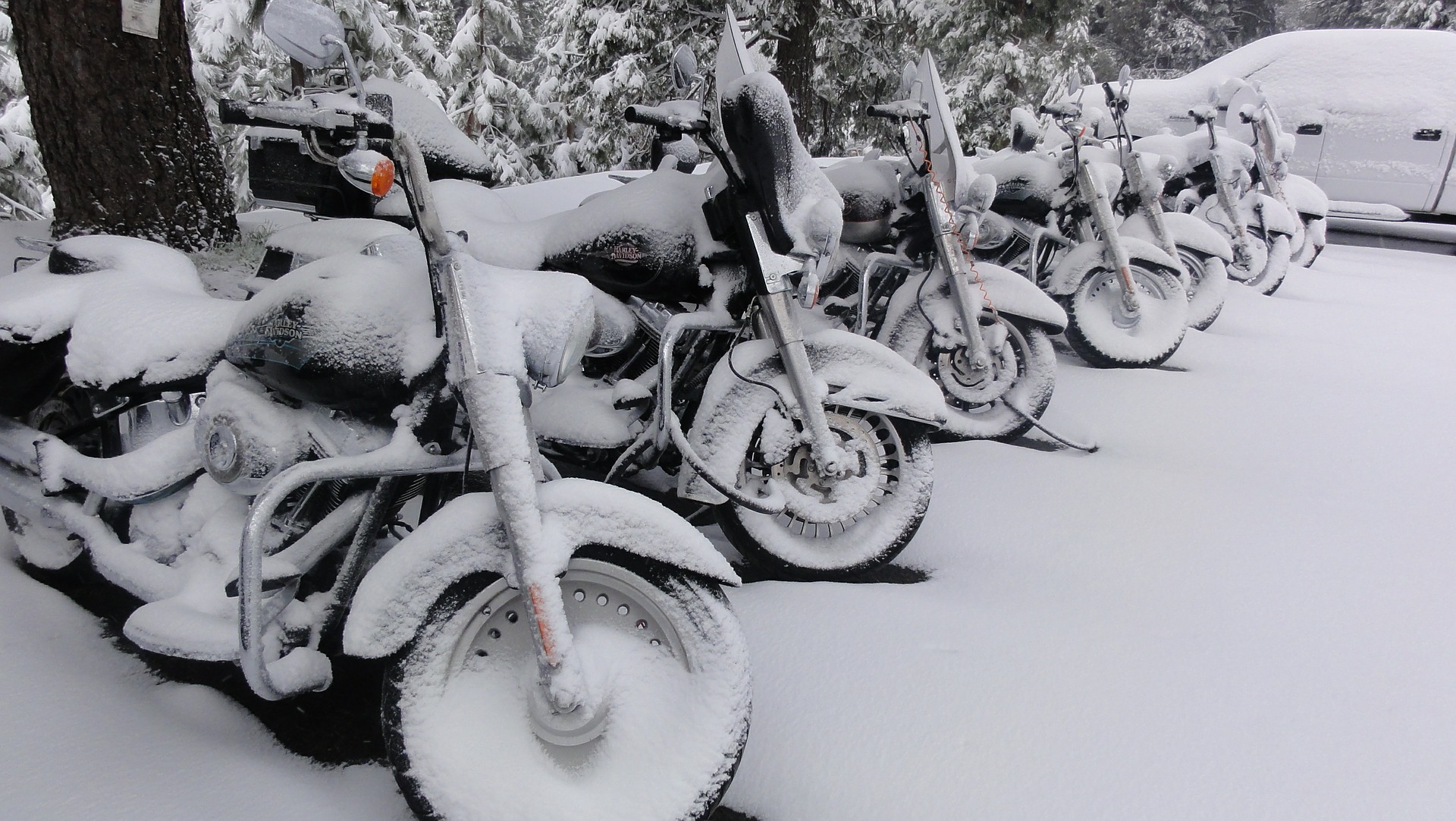Motorcycle Riding Safety for Every Season
As each season ushers in changes to the weather, new challenges to riding a motorcycle arise during those changing conditions.

We've put together a list of tips for riding in each of the seasons that if followed, should enable you to enjoy a safer and more rewarding motorcycling riding experience.
Riding Safely in Spring
In many ways, springtime is the ideal season for motorcycle riding. The weather is mostly pleasant, rainfall is usually lower and the days are longer.

If your motorcycle was in storage over the winter, it will need a thorough inspection and service before getting back on the road.
- Check that the tires haven't split or perished
- Bleed the brake lines, and replace the brake pads
- Clean or replace the air filter if necessary
- Lube the clutch, shifter and brake levers, cables, and pedals and pivot points
- Test the battery and the lights to make sure they still work

Being off the saddle for months at a time may leave your riding ability a bit rusty. Go for a couple of short rides during quiet periods of the day when there's less traffic. This helps reawaken your riding senses and awareness, and hone your muscle memory for crisp gearshifts, smooth turns, and controlled acceleration and braking.
Check your riding gear to make sure your helmet is still solid and your waterproof apparel is still waterproof. If your gloves have holes in them and your leathers are worn out, consider investing in some new gear, perhaps some with Kevlar protection.
Riding Safely in Summer
The days might be sunny and the weather nice, but there are still many hazards motorcycle riders face during summer.

Resist the temptation to wear less gear because of the heat. While it may feel good to cruise only in a T-shirt — unencumbered by a heavy motorcycle jacket — you should never sacrifice safety for comfort. In the battle between asphalt and skin, asphalt always wins. There's plenty of gear such as vented shorts and jackets, as well as lightweight boots designed for riding comfortably in hot weather.

Keep hydrated when riding, especially on longer trips. Dehydration leads to diminished concentration and increased fatigue, both of which increase the likelihood of an accident. Carry plenty of water with you and frequently pull over to take a drink. Avoid drinking coffee or sugary sodas, which actually increase dehydration. Always ride with caution in extremely hot conditions, as other riders may suffer from heat exhaustion and cause accidents as a result.
Riding Safely in Fall
Many motorcyclists consider autumn their favorite time of year to ride, but the fall season does present a unique set of circumstances for riding safely.

Shorter days mean you'll probably be riding around the time the sun rises and sets, especially if you commute by motorcycle. Riding at dawn and dusk means riding when the sun is low, which produces sun glare for other drivers and can render motorcyclists invisible. Wear bright colors, always ride with your lights on, and maintain as much visibility as possible to other drivers.

When riding at sunrise or sunset, be prepared to take evasive action. Ride slower to give yourself more reaction time, and stay focused in case a situation calls for an evasive maneuver. Beware of fallen leaves and other debris on the road. Every autumn millions of leaves tumble off trees and litter the roads. When these leaves become wet, riding on them can be treacherous. A front wheel can slide from under you when you least expect it, so ride with extreme caution on wet leaves and avoid them whenever possible.

Be prepared for changes in the weather and temperature. It might be sunny and warm when you set out, but temperatures can dip drastically during the fall as the day goes by. Riding in cold or wet conditions can impair your concentration, thus increasing the chances of an accident. Layer your clothing so you can ride comfortably in both warmer and colder conditions, or invest in adaptable riding gear that features removable linings and vents.
Riding Safely in Winter
While many motorcyclists prefer to put their bikes into storage at the onset of cold weather, others find gratification riding in snowy, icy winter conditions. Cold temperatures cause the air pressure in your tires to drop, so check to make sure they're inflated correctly, and add air if necessary.

Colder tires have less grip, so go easy on them until they warm up and start generating normal levels of traction. Consider fitting a windshield, windscreen or deflector to your motorcycle. A full-size screen dramatically reduces the wind-chill factor and protects you from debris. Even a small deflector can make a big difference when the temperature drops.
Keep your extremities warm with quality insulated gloves and riding boots. You won't have complete control of the clutch, throttle and front brakes if your hands are so cold you can't feel them, and nothing is as miserable as riding with cold, damp feet. A balaclava under your helmet will help keep your head warm, and you'll want a scarf or neck gaiter to prevent icy wind from getting into the gap between your helmet and jacket.

If your torso gets cold, your body will send blood from your extremities — including your head — to try and warm it. This may lower your concentration levels and impair your judgement. Wear thick, insulating clothing under your motorcycle jacket, and make sure it's windproof. Also, have plenty to eat and drink, as a well-fed rider is warmer, and has the fuel the body needs to stay alert.

Avoid riding on snow or ice, period. Driving in freezing conditions can be dangerous enough on four wheels, let alone two. Nobody gives out medals for riding on snow and ice, so put your motorcycle away and wait for conditions to improve before you ride again. Also, make sure to properly winterize your motorcycle, which you can learn how to do by watching the video below.
Every time you set out on your motorcycle there will be potential hazards and challenges ahead of you, regardless of the season. Make your personal safety your main priority when riding to enjoy endless miles of trouble-free riding.







